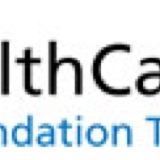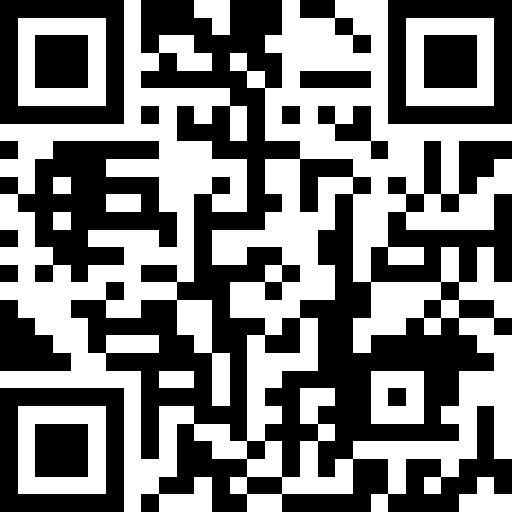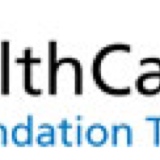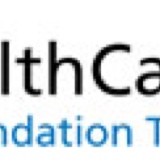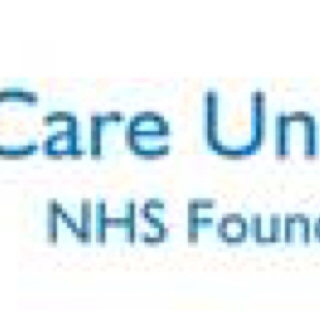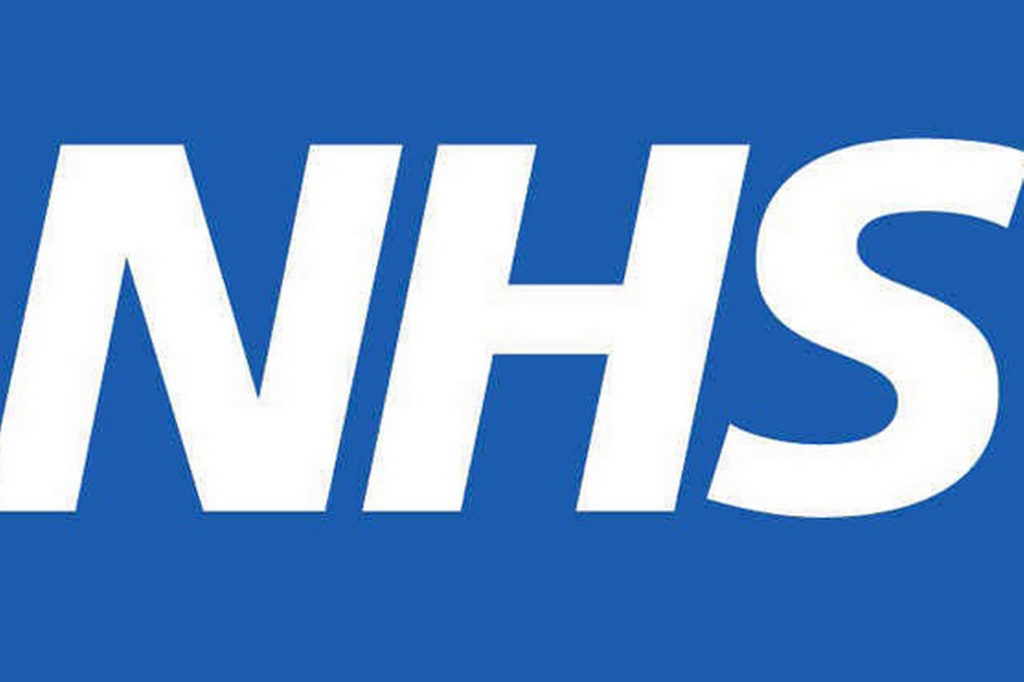Information
-
Audit / Document No:
-
Site / Ward / Department:
-
Address:
-
Date / Time:
-
Audit Conducted by:
-
Manager's Name:
Section 1 - General
Section 1 - General
-
1.1 All staff are aware of the health and safety policy and know how to access it?
-
Consider how staff have access to this policy eg PC access / hard copy / induction and PDRs?
-
Add media
-
1.2 Job descriptions of managers supervisors and staff set out their health and safety responsibilities?
-
Where are they stored? Do staff sign to say that they have read agree and understand them?
-
Add media
-
1.3 Specific risks to patients are assessed and recorded as necessary?
-
Have you listed the specific risks, recorded the significant ones and carried out the assessments for each?
-
Add media
-
1.4 Specific risks to visitors and contractors are assessed, recorded and communicated as necessary?
-
How are these risks communicated to visitors and contractors?
-
Add media
-
1.5 Suitable and sufficient generic health and safety risk assessments i.e. lone working, slips trips and falls etc. have been completed and details recorded?
-
Where are they recorded and do all staff have access to them either electronically or in hard copy?
-
Add media
-
1.6 Health and safety is regularly discussed with staff and minutes are kept?
-
What forums are health and safety issues discussed and at what frequency? Are the topics discussed recorded?
-
Add media
-
1.7 All staff received local health and safety awareness at local induction?
-
Are these local inductions documented and recorded?
-
Add media
-
1.8 All staff receive training when they change their job or responsibilities within the department unit or ward?
-
Are these details documented and recorded?
-
Add media
-
1.9 All temporary (bank agency etc) workers receive adequate information, training and supervision at a dept level to enable them to work safely?
-
Are these details and documented and recorded?
-
Add media
-
1.10 Specific risks to new and expectant mothers are assessed and recorded as necessary?
-
Are the meetings with the new or expectant mothers recorded and agreed safe systems signed off by both parties?
-
Add media
-
1.11 Specific risks to young persons who work in the department unit ward under the age of 18 assessed and recorded?
-
Has a risk assessment been completed and have you considered all areas were a young person may be exposed to risk?
-
Add media
-
1.12 Specific risks to children under the age of 16 ie work experience are assessed, recorded and sent to the child's parents before they come into work?
-
Has a risk assessment been completed and have you considered all areas were a young person may be exposed to any risk?
-
1.13 All staff receive training when new equipment is introduced into the department unit or ward?
-
Are these local equipment inductionsdocumented and details recorded?
-
Add media
Section 2 - Maintenance & Equipment
Section 2 - Maintenance and Equipment
-
2.1 All staff know how and when to report mechanical, electrical and structural faults?
-
How are your staff informed are contact details for a state readily available?
-
Add media
-
2.2 Repair and maintenance work is carried out promptly?
-
What is the procedure/where is it written and are records kept?
-
Add media
-
2.3 Defective equipment is taken out of use until repair or replacement?
-
Do you have a defect book and how do you prevent the equipment from being used until it is repaired?
-
Add media
-
2.4 Suitable Planned Preventative Maintenance (PPM) records are held and maintained? e.g. departmental maintenance log book?
-
Who is responsible for the PPM and does the responsible person(s) have access to the records for their equipment?
-
Add media
-
2.5 Passenger and goods lifts are maintained, serviced and records are held?
-
Who is responsible for the maintenance? Equipment for lifting persons could be subjected to 6 monthly testing in accordance with Lifting Operations & Lifting Equipment Regulations (LOLER)?
-
Add media
-
2.6 Patient lifting equipment (eg hoists) have been tested every 6 months by contractors via Estates?
-
Add media
-
2.7 A predetermined due date for 6 monthly testing of patient lifting equipment has been logged locally for action by Estates at least 2 weeks before expiry?
-
Add media
-
2.8 Use of equipment is restricted to those who have been trained in its use?
-
Add media
-
2.9 Equipment training records are kept and staff sign when they have received training?
-
Add media
-
2.10 Drug fridges are directly connected to the mains supply (plug free) and are not fitted with an on off switch?
-
Add media
-
2.11 User manuals and instruction books are available to all staff at all times when work equipment is likely to be in use?
-
Add media
-
2.12 Is Personal Protective Equipment provided for staff?
-
Are staff aware of the need to keep reusable PPE in a clean and safe usable state after use and where to report any defects?
-
Add media
-
2.13 Do all staff wear the required PPE as stated in the risk assessment?
-
Is it always available for staff to use? How is this monitored and what steps are taken for non-compliance?
-
Add media
-
2.14 All equipment PPM is up to date and records are available?
-
Do you know what equipment is subject to PPM in your department or workplace?
-
Add media
-
2.15 Access to dangerous parts of machinery is prevented?
-
Add media
-
2.16 Start, stop an emergency stop controls all work correctly, and are all in easy reach and staff know where they are?
-
Add media
-
2.17 Portable Appliance Testing (PAT) is in date and has been completed in accordance with the Trust policy timescales?
-
Who checks, how is the equipment marked and what is the procedure if an appliance is missed?
-
Add media
-
2.18 All curtain rails in all Mental Health inpatient areas are collapsible as per Trust policy (i.e. magnetic fittings)?
-
Add media
Section 3 - Lone Working and Security
Section 3 - Lone Working and Security
-
3.1 All new staff are briefed at local induction about the areas in which they will carry out home visits and they are made aware of any safety systems?
-
Where are the safe systems kept and do you have records of new staff that have read and understood these?
-
Add media
-
3.2 Staff both new and existing are fully conversant with the Trusts lone working policy and procedures?
-
Is the system periodically tested to ensure staff compliance? When was it last tested?
-
Add media
-
3.3 All staff involved in patient home visits have undergone conflict resolution training / personal safety awareness?
-
What type of training: initial or refresher? Is it in date and not just booked?
-
Add media
-
3.4 There is a system in place for staff to make a pre visit risk assessment of the patient case history, current status, home environment, any potential risk eg animals or triggers and any potential risk from relatives?
-
What is the system, and how do staff access the information and in what format? If no, what are you doing about it?
-
Add media
-
3.5 There is a system in place to maintain the traceability of all staff in your area of responsibility when they are visiting in the community?
-
What is the system you use? Is it whiteboard, diaries, mobile phone or other technology? Is the escalation process recorded and are staff aware of this process and is it periodically tested? Does it work?
-
Add media
-
3.6 All lone workers, whether permanent or temporary, have access to a mobile phone?
-
If this is the case what is the rest of your lone worker system? Hint: what if they are in a poor reception area, who do they leave a message with and what happens if they do not ring back within an agreed time limit?
-
Add media
-
3.7 Daily itineraries are maintained within the community base such as a printed schedule of visits or a desktop diary?
-
Who monitors these and who decides on an escalation? Are they updated / maintained?
-
Add media
-
3.8 Staff contact details are up to date, including the details of a nominated person in case of an emergency, and are held and accessible in a central known area of the base?
-
Does this include out of hours, weekends and bank holiday arrangements? Can staff contact each other as well as a manager?
-
Add media
-
3.9 Staff hold details of who they can call upon to provide assistance where and when ever needed whilst lone working?
-
In what format? Data just held on electronic devices eg mobiles, cannot be available when no battery power or break down?
-
Add media
-
3.10 Staff who are required to work alone have read and understood the lone worker policy?
-
How is this monitored? e.g. team meetings or PDR sessions. Include locally adapted procedures identified in your risk assessment.
-
Add media
-
3.11 The department can be secured in a way that makes staff feel comfortable eg at night or after an intruder alert?
-
See your local workplace security assessment.
-
Add media
-
3.12 All staff are aware of the procedure should they be faced with violence or potential violence?
-
What training, frequency of refresher and records take place?
-
Add media
-
3.13 Staff feel safe and secure when working alone?
-
See your lone working risk assessment. Have you discussed this with your staff?
-
Add media
-
3.14 Staff have access to a secure locker / box / drawer to lock away any valuables?
-
Add media
-
3.15 Staff have been trained to an appropriate level in intervention techniques and conflict resolution if necessary?
-
What training, frequency of refresher and records take place?
-
Add media
-
3.16 Staff report all security breaches?
-
Do they know who to report them to?
-
Add media
-
3.17 All staff where ID badges?
-
Add media
-
3.18 Patient call points / listening devices are in appropriate locations, fully operational with pull cords / buttons in satisfactory condition?
-
Refer to your local patient environment risk assessments.
-
Add media
-
3.19 All staff emergency panic alarms are fully operational, tested, with a sufficient number for use by staff and visitors?
-
What are the testing arrangements and where are the records kept?
-
Add media
-
3.20 Staff are aware of their responsibilities when holding keys and on leaving the premises?
-
Add media
-
3.21 All services eg water, gas, electricity, are clearly marked and protected?
-
Add media
-
3.22 Security does not impede any emergency exit or access?
-
Add media
Section 4 - Windows and Doors
Section 4 - Windows and Doors
-
4.1 All windows etc that are capable of being opened, can be opened, closed or adjusted safely and easily?
-
Without the need to climb onto furniture to gain access.
-
Add media
-
4.2 Where there is an identified risk of anyone falling through or out of windows, they are controlled so they can only be opened to a maximum of 100 millimetres?
-
Restrictors should not be overridden, damaged or rendered unusable?
-
Add media
-
4.3 All window declarations / checks are up to date and copies are held in the department / unit / ward where windows are restricted?
-
How frequently are the windows checked and where is this information recorded?
-
Add media
-
4.4 Open windows do not project into an area where people are likely to collide with them?
-
Including external walkways. If they do what are you doing about it and what temporary measures are in place? Hint: Signage or Barriers.
-
Add media
-
4.5 Window frames and rubber seals in Mental Health inpatient areas are cut into small sections to prevent their use as a ligature aid?
-
Add media
-
4.6 All transparent surfaces are marked where necessary to make them apparent?
-
Add media
-
4.7 All doors that are capable of being opened by being pushed from either side have a transparent panel enabling the user to have a clear view of the other side?
-
Add media
-
4.8 All ordinary hinged doors in frequently used areas that open outwards into areas such as corridors, have a transparent panel (not toilets)?
-
i.e. 2 way opening (saloon style) doors.
-
If toilets, do you have appropriate signage?
-
Add media
Section 5 - Temperature and Lighting
Section 5 - Temperature and Lighting
-
5.1 Mechanical ventilation systems and air conditioning systems are regularly and properly cleaned, tested, maintained and records kept?
-
When and who does the cleaning and maintenance and where can the records be accessed?
-
Add media
-
5.2 Thermometers are provided to enable staff to determine the temperature?
-
Add media
-
5.3 The temperature always remains comfortable wherever possible?
-
Consider draughts and additional means of heating / cooling. In hot weather consider breaks, clothing, cool water, fans etc.
-
Add media
-
5.4 Local heating or cooling is available as necessary?
-
Add media
-
5.5 Changing rooms / shower rooms / toilet facilities remain at a comfortable room temperature (where provided)?
-
Add media
-
5.6 All areas have suitable and sufficient lighting?
-
Add media
-
5.7 Emergency lighting is available and functioning where necessary?
-
Add media
Section 6 - Cleanliness & Waste
Section 6 - Cleanliness and Waste
-
6.1 The workplace, furniture, furnishings and fittings are kept sufficiently clean?
-
Who does the cleaning and when?
-
Add media
-
6.2 All staff are aware of procedures to follow when dealing with hazardous spillages and suitable equipment is always available? (See COSHH section for more details? more details)?
-
Who is responsible and where is the equipment held? Do staff know who to contact?
-
Add media
-
6.3 All waste materials are disposed of correctly in line with Trust policy and procedures?
-
See Trust policy: Waste Management P4olicy
-
Add media
-
6.4 All floors are free from holes, uneven and slippery surfaces?
-
Add media
-
6.5 All floors are free from loose or worn carpets?
-
Add media
-
6.6 Floors that are prone to getting wet still remain free from unduly slippery surfaces?
-
Are signs in place or available for use?
-
Add media
-
6.7 When spillage occurs immediate steps are always taken to clean it up or cover with absorbent granules?
-
Where are the spillage kits (if held)?
-
Add media
-
6.8 All floors and traffic routes (internal and external) are free from obstructions which may be present a hazard or impede access?
-
Including internal corridors.
-
Add media
-
6.9 Handrails, including those on staircases and slopes, are secure and fault free?
-
Add media
-
6.10 All rooms containing sanitary conveniences and washing facilities are adequately ventilated and lit?
-
Add media
-
6.11 All sanitory and washing facilities are kept in a clean a orderly fashion?
-
Add media
-
6.12 All washing facilities have a supply of clean hot and cold running water and include liquid soap and paper disposable towels and/or hand dryers?
-
Add media
-
6.13 Showers for staff (if provided) are in a good condition, have hot and cold water and the doors can be safely secured?
-
Add media
-
6.14 Cups or other drinking vessels are supplied for water for employees?
-
Paper cups supplied or reliant on own cups mugs?
-
Add media
-
6.15 All drinking water is well marked by an appropriate sign where necessary?
-
Unmarked taps are considered safe to drink. Place appropriate markings for non -drinkable taps.
-
Add media
-
6.16 Suitable and safe storage is provided for the clothing of any person at work which is not worn during working hours?
-
Consider drying area for cyclists clothes, coats and wet umbrellas.
-
Add media
-
6.17 Where facilities to change clothing are required, suitable security is provided?
-
Staff changing rooms, lockers or lockable cupboard drawers for personal belongings.
-
Add media
-
6.18 Are refrigerators clean and in good working condition? Are door seals clean and in good repair?
-
Refer to local and regular workplace inspections.
-
Add media
-
6.19 Are freezers clean and in good working condition? Are door seals clean and in good repair?
-
Add media
-
6.20 Are temperatures of refrigerators and freezers monitored and locked?
-
For those that contain clinical items such as blood, drugs etc.
-
Add media
-
6.21 Are the cookers and ovens clean and in good working condition?
-
Add media
-
6.22 Are the cupboards, units and worktops clean and in good repair?
-
Add media
-
6.23 Are the floors clean and in good repair?
-
Add media
-
6.24 Are all (Trust) food items within date and stored correctly?
-
Add media
-
6.25 Are all food storage containers clean and in good repair?
-
Add media
-
6.26 Are cleaning materials clearly labelled and installed correctly?
-
Add media
-
6.27 Checks and maintenance are completed as documented in the legionella policy (3 monthly shower head cleaning etc)?
-
Add media
-
6.28 Are water temperature checks being completed and recorded locally in accordance with Trust policy?
-
Are unused taps and showers flushed regularly?
-
Add media
-
6.29 Are frequently used outlets eg sinks, showers and baths, flushed on a twice weekly basis and records maintained?
-
Add media
Section 7 - Fire
Section 7 - Fire
-
7.1 Are the nominated fire wardens and marshalls known by all staff?
-
What frequency do they attend refresher training and where is this recorded. Is there a list in your department of whom the fire wardens / marshalls are and where they are located?
-
Add media
-
7.2 Are all automatic fire doors working correctly?
-
When were they last checked?
-
Add media
-
7.3 All staff know and understand the procedure should evacuation of an area become necessary?
-
Has all staff attended fire evacuation exercises according to the fire risk assessment?
-
Add media
-
7.4 All staff have attended fire training within the past 12 months and department training records are available?
-
How is attendance monitored?
-
Add media
-
7.5 Incident reports are completed when a fire alarm has been activated even if no fire was present?
-
Add media
-
7.6 All staff have participated in a department fire drill with in the past 18 months?
-
If no, how do you intend to address this?
-
Add media
-
7.7 Is there an emergency file / plan available for emergency services?
-
Are staff aware of where the plans are kept and how to access them? Including out of hours?
-
Add media
-
7.8 The Fire Marshall board is available and accessible for immediate use?
-
Add media
-
7.9 Are all non-automatic fire doors kept closed?
-
Add media
-
7.10 All fire extinguishers are safely mounted, easily accessible and not obstructed?
-
Obstruction includes items waiting for collection or delivery. Do staff know where the nearest fire point is?
-
Add media
-
7.11 Fire extinguishers tamper tabs are in place and extinguishers are within service date?
-
Add media
-
7.12 All fire exits are unobstructed and clearly marked?
-
Add media
-
7.13 Emergency exit routes and doors are signed and unobstructed at all times?
-
Add media
-
7.14 All emergency doors open without a key having to be used?
-
If a key regime is in place for security, all locks should use the same key which all staff should carry at all times. This will probably include fire alarm call point keys and external garden gate locks.
-
Add media
-
7.15 A list of staff on duty and patients (where applicable) is available and accessible so that it can be taken to the fire evacuation point if required?
-
Consider visitors? Fire wardens may need to physically check and clear all areas and then report to the responsible designated person in charge.
-
Add media
-
7.16 All staff know and understand the procedure to follow upon discovering a fire and on hearing the fire alarm?
-
Add media
Section 8 - Manual Handling & Falls
Section 8 - Manual Handling and Falls
-
8.1 Any changes in floor level ie steps or slopes which are not immediately obvious are marked to make them fully visible?
-
Do you have appropriate caution signs?
-
Add media
-
8.2 Materials and objects are stored and stacked in such a way that they are not likely to fall and cause injury?
-
i.e good housekeeping.
-
Add media
-
8.3 All racking and shelving is of adequate strength and stability with regard to the loads placed upon it, and it is fixed securely?
-
Fixed to prevent wobbling and objects falling. e.g. screwed to the wall?
-
Add media
-
8.4 The Manual Handling policy is accessible to all staff?
-
Add media
-
8.5 All manual handling incidents are reported?
-
Do all staff know how and where to report incidents?
-
Add media
-
8.6 All manual handling tasks have been assessed and recorded as necessary?
-
Can all affected staff view these assessments and controls?
-
Add media
-
8.7 All equipment employed to carry loads (including patients) is fit for that purpose, eg wheels/castors on trolleys move freely, bed ends are always in place to assist posture when pushing / pulling, weight limits if applicable are observed etc?
-
Who checks, to what standard, and where is it recorded?
-
Add media
-
8.8 All staff are assessed for fitness to work for manual handling tasks on return from sickness absence with a review of the risk assessment where required?
-
Return to work interviews or Occupational Health assessments.
-
Add media
-
8.9 All staff know who their manual handling trainer is and how to contact them for advice?
-
Where is this information found and how are staff informed?
-
Add media
-
8.10 All staff manual handling training is up to date and records are held within the department?
-
Training is in date and not just booked ?
-
Add media
-
8.11 There are sufficient manual handling aids available at all times, including trolleys ?
-
As per your local risk assessments ?
-
Add media
-
8.12 All manual handling aids are in good working order, clean and damage free?
-
Who checks, to what standard, and where is it recorded?
-
Add media
-
8.13 Hoist batteries are routinely checked and recharged as necessary?
-
Add media
-
8.14 All patients have a recorded manual handling risk assessment that is accessible to all staff requiring such information ?
-
Add media
-
8.15 Patient handling assessments always acompany the patient especially when attending other departments?
-
Add media
-
8.16 All stacked items are on appropriate shelves and at an appropriate height?
-
As per your local workplace or manual handling assessment.
-
Add media
Section 9 - Control of Substances Hazardous to Health (COSHH)
Section 9 - Control of Substances Hazardous to Health (COSHH)
-
9.1 All substances marked with a hazard warning sign have been assessed?
-
Add media
-
9.2 All COSHH assessments are up to date and safety data sheets, along with safe working practices, are accessible to all staff at all times ?
-
Do appropriate staff have easy access to the assessments, safety data sheets and safe working practices followed for each product ?
-
Add media
-
9.3 Are all substances and chemicals being stored correctly and in line with their COSHH assessments ?
-
Add media
-
9.4 Spillage packs (if applicable) are available for emergency use, eg mercury?
-
Add media
-
9.5 Substances assigned an occupational exposure standard have been assessed and are within the approved limits?
-
Add media
-
9.6 All substances are kept in their original containers and packaging?
-
Not dispensed into other unmarked containers.
-
Add media
-
9.7 Liquid Nitrogen (LN2) flasks/containers are regularly checked for serviceability and stored appropriately?
-
Add media
-
9.8 Where staff require health surveillance, is this up to date?
-
Add media
-
9.9 Are Latex free products in use?
-
Refer to Trust Latex policy.
-
Add media
-
9.10 Is there a suitable alternative to latex available where required?
-
Do affected staff know where latex-free products are kept?
-
Add media
Section 10 - Infection Control
Section 10 - Infection Control
-
10.1 The infection control policies, including needlestick protocol, are available to all staff and staff know how and where to access them ?
-
Add media
-
10.2 All staff know how to deal with blood spillages in accordance with Trust blood borne viruses policy?
-
Add media
-
10.3 There is a sufficient amount of PPE available and staff always protect themselves when at risk of exposure to blood / body fluids?
-
Add media
-
10.4 There is an adequate amount of sharps boxes which are correctly assembled?
-
And easily accessible ?
-
Add media
-
10.5 Boxes are less than two thirds full and have no sharps protruding ?
-
Add media
-
10.6 Boxes are secured safely and kept off the floor?
-
In ward and clinic rooms?
-
Add media
-
10.7 Sharps boxes are identified as containing special waste in line with the waste disposal policy?
-
Add media
-
10.8 Are waste bags only filled three quarters full and tied correctly?
-
Awareness of risks from protruding sharps waste. (Waste that has been inappropriately disposed of e.g. needles and glass)
-
Add media
-
10.9 Is controlled waste disposed of with information filled out correctly?
-
Add media
-
10.10 If produced, is cytotoxic waste clearly marked?
-
Add media
-
10.11 If produced, is chemical waste (ie hazardous chemicals) disposed of correctly ?
-
Add media
-
10.12 Protocols for equipment decontamination are followed by all staff?
-
See Medical Devices and Equipment Management policy.
-
Add media
-
10.13 All staff always report infection control incidents?
-
Add media
-
10.14 All staff have received infection control training within the past 12 months?
-
Add media
-
10.15 All staff are familiar with infectious diseases policies?
-
Add media
-
10.16 All hazardous chemical waste is disposed of in line with the Trusts hazardous waste disposal policy?
-
Add media
-
10.17 Are the correct waste bags used for the correct disposal i.e. clinical waste?
-
Add media
Section 11 - Miscellaneous
Section 11 - Miscellaneous
-
11.1 All toys have a CE mark ?
-
Add media
-
11.2 All toys are free from small pieces that could come loose or be pulled off?
-
Add media
-
11.3 Toys are checked for safety on a regular basis?
-
Add media
-
11.4 All toys are free from sharp edges?
-
Add media
-
11.5 All toys can be cleaned easily and are free from visible contamination?
-
Add media
-
11.6 A first aid risk assessment has been completed to determine the appropriate number of first aiders required for the workplace?
-
See Trust First Aid policy.
-
Add media
-
11.7 Details of the appointed first aider and how to contact them is prominently displayed on site?
-
Signage is in accordance with Trust first aid policy.
-
Add media
-
11.8 The appointed first aider holds a current first aid certificate or is a practising registered medical practitioner or nurse whose name is on the NMC register?
-
Must be appointed as first aider and not assumed that clinical staff are on the premises.
-
Add media
-
11.9 Where applicable, the first aid box is available and fully stocked for use?
-
Add media
-
11.10 All staff know how to telephone the emergency services using the appropriate and available telephone system eg switchboard exchange numbering?
-
Add media
-
11.11 Slip / trip hazards have been made safe eg no trailing cables, no spillage, no equipment on the floor etc ?
-
Add media
-
11.12 All storage areas are clean and tidy and do not present a health and safety risk?
-
Add media
-
11.13 Only trained employees have access to ladders?
-
Add media
Section 12 - Grounds & Car Parks
Section 12 - Grounds and Car Parks
-
12.1 All vehicles are securely locked when not in use?
-
Add media
-
12.2 Drivers are correctly licenced for the vehicles driven
-
Who checks and are copies of driving documents kept? See Trust Occupational Road Risk policy.
-
Add media
-
12.3 All drivers and vehicles are insured for busi all accidents involving trusts vehicles are reported? ness use? Including employees who use their own vehicles.
-
Add media
-
12.4 All accidents involving Trust vehicles are reported?
-
Add media
-
12.5 All accidents involving non Trust vehicles obscuring whilst on trust business are reported?
-
Add media
-
12.6 Are all points of access and exits clear and free from obstructions?
-
Add media
-
12.7 Are footpaths and roadways in good repair?
-
Add media
-
12.8 Are traffic signs adequate?
-
Add media
-
12.9 Are pedestrian areas marked / protected?
-
Add media
-
12.10 Are access/exits suitable for disabled persons (wheelchairs)?
-
Add media
-
12.11 During bad weather, are procedures in place for gritting walkways and staff know who is responsible for doing this?
-
Is there an action plan that details who carries out local gritting and clearing of snow and ice? When was this last reviewed?
-
Add media
-
12.12 Are boundary fences maintained and in good condition?
-
Add media
Section 13 - Site Specific
Section 13 - Site Specific
-
13.1 Is the asbestos policy available to all staff?
-
Add media
-
13.2 Are staff aware that any work within buildings should only be undertaken by authorised qualified staff or sub contractor?
-
Add media
-
13.3 Are staff aware if an asbestos survey has been completed and is held by Estates?
-
Add media
-
13.4 A site asbestos register is held and maintained on site?
-
Add media
-
13.5 Arrangements for LOLER testing of lifting equipment is in place and records of inspections are recorded in Estates?
-
Add media
-
13.6 Portable Appliance Testing (PAT) arrangements are scheduled for the Trust and a programme of works is maintained?
-
Add media
-
13.7 Thermostatic Mixing Valves (TMVs) are fitted to all water outlets eg showers, baths and sinks in accordance with the Trust Burns from Hot Surfaces policy?
-
Add media
-
13.8 Any untoward activity (eg health and safety hazards) and faults observed by Estates and IT staff are reported for further action?
-
Add media
-
13.9 A consolidated master asbestos register is held and maintained by Estates and is used in conjunction with local site registers?
-
Add media
-
13.10 IT staff will consult and confirm with the on site asbestos register prior to carrying out works?
-
Add media
-
13.11 Any areas requiring works to asbestos areas is controlled by Estates?
-
Add media
Section 14 - Display Screen Equipment (DSE)
Section 14 - Display Screen Equipment
-
14.1 All personnel who regularly use Display Screen Equipment (DSE) are aware of, and have access to, the DSE policy?
-
Add media
-
14.2 DSE workstation assessments have been completed for all relevant members of staff?
-
Have they been reviewed, at least annually?
-
Add media
-
14.3 All DSE workstation assessments have been actioned as appropriate?
-
Add media
-
14.4 All staff are assessed for fitness to work with DSE on return from sickness absence with a review of the risk assessment included, where required?
-
Where is the evidence that this has been carried out? Have affected staff agreed and signed a review?
-
Add media
